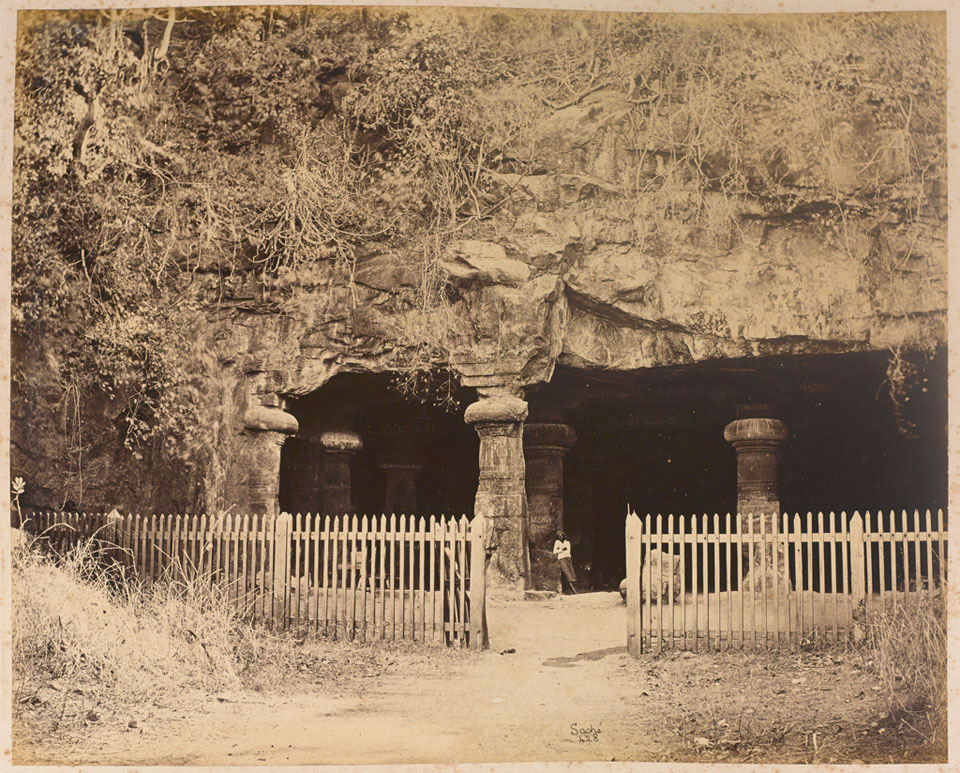
Online Collection
« Prev - 1 of 1 results - Next »
'Caves of Elephanta', 1870 (c)
Photograph by John Edward Saché (1824-1882), 1870 (c).
Photograph showing the opening of a cave which is being supported by decorative pillars and enclosed by a wooden fence. A man wearing a turban is leaning against one of the pillars which has some writing upon it.
The basalt cave temples on Elephanta Island, Maharashtra, India, are now a UNESCO World Heritage Site.
From a photograph album of 74 photographs compiled by Major William Davis (1825-1873).
Lieutenant-Colonel William Davis was born in Cawnpore in 1825, the son of Colonel William Worsley Davis (1784-1833) and his wife Letitia. He was educated in England, becoming an Ensign in the Honourable East India Company's Army in December 1842. He served with the 31st Bengal Native Infantry in the Gwalior campaign in 1843, the 2nd Sikh War (1848-1849) and on the North West Frontier of India in 1850. In June 1857 Captain William Davis took command of the Calcutta Infantry Volunteer Guards. During and after the Indian Mutiny (1857-1859) Davis gained distinction commanding the Jhansi Division of Military Police. Davis became Deputy Inspector-General of Police at Agra in 1864 and was made a Lieutenant-Colonel in December 1868. Davis was Commandant of the Calcutta Infantry Volunteer Guards and he died on 7 October 1873 at Naini Tal hill station having collapsed while being entertained by the volunteer unit. Davis's final resting place was at the Church of St John in the Wilderness at Naini Tal where his second wife, Mary Jane Theresa, who died in 1870, was also buried.
NAM Accession Number
NAM. 1980-04-37--54
Copyright/Ownership
National Army Museum, Out of Copyright
Location
National Army Museum, Study collection
Object URL
https://collection.nam.ac.uk/detail.php?acc=1980-04-37--54

